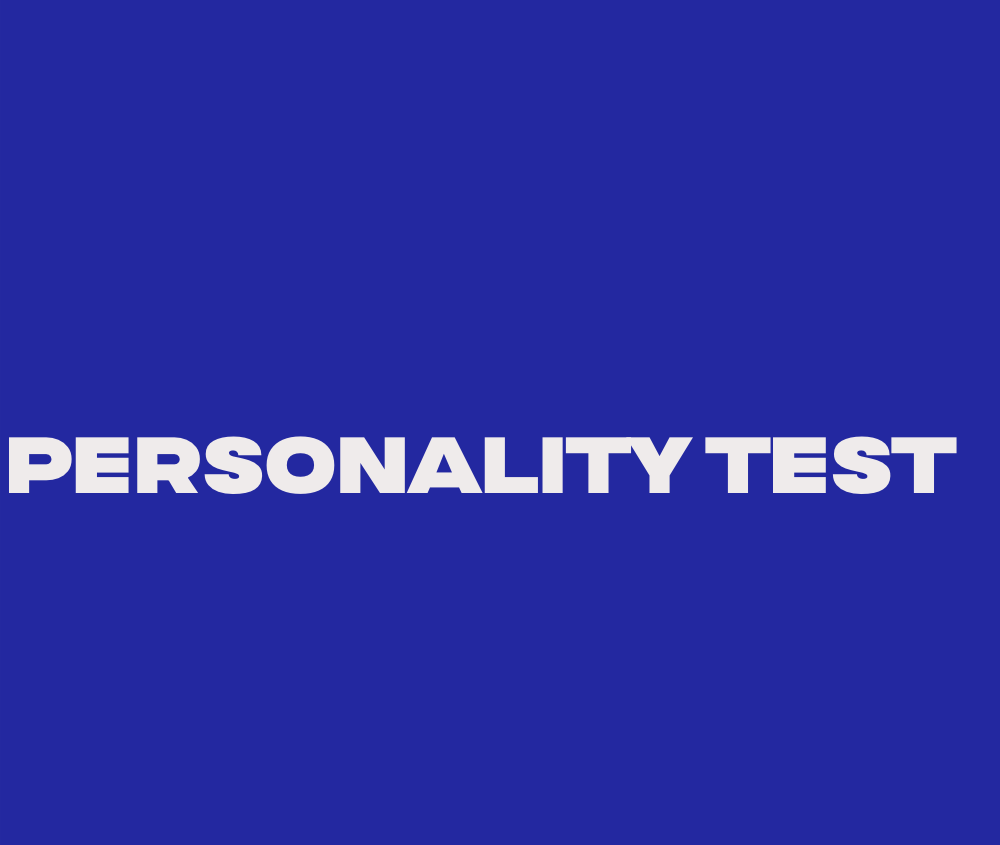Personality Exploration
Discover Your Traits: Character Personality Test

Did you know that our personality traits are like a fingerprint, making each of us unique in our own way? Understanding our individual traits can provide valuable insights into who we are and how we navigate the world around us. If you’ve ever wondered what fictional character you relate to or wanted to gain a deeper understanding of your own personality, then the character personality test is here to help.
It’s time to embark on a journey of self-discovery through an interactive quiz that matches you to fictional characters based on descriptions and similarities. Developed with the collective efforts of over 3 million volunteers, this groundbreaking test is backed by a database of descriptions for 2,000 characters.
But this isn’t just any personality test. It’s a character personality test that embraces the power of storytelling and imagination, allowing you to explore your own traits through the lens of beloved characters. Whether you’re an aspiring writer, actor, or simply curious about your own personality, this test provides a unique and engaging way to unlock the depths of who you truly are.
Key Takeaways:
- Discover your unique personality traits through an interactive character personality test.
- Explore the world of fictional characters and see how you relate to them.
- Gain valuable insights for personal growth, character development, and decision-making.
- Embrace the power of storytelling and imagination to understand your own traits.
- Remember, this test is for entertainment and informational use only, and should not be used as psychological advice or a screening tool.
How does the character personality test work?
The character personality test is an interactive quiz designed to uncover your unique personality traits by presenting you with pairs of adjectives and a slider. To participate, simply indicate where you fall on the spectrum between the two adjectives by dragging the slider. The test compares your self-ratings against a database of descriptions for fictional characters, finding the closest match based on your responses.
This psychological assessment is adaptive, allowing you to customize the number of questions you want to answer. By tailoring the quiz to your preferences, you can ensure a personalized experience that suits your time constraints and curiosity. The median time to complete the recommended version of the test is approximately 3 minutes, making it a quick and engaging activity for self-discovery.
Getting Started
Once you begin the character personality test, you’ll encounter a series of paired adjectives that represent different personality traits. Here’s an example:
“Which one describes you best?”
Introverted – Extroverted
In this example, you would move the slider closer to ‘Introverted’ or ‘Extroverted’ depending on where you feel your personality falls on the spectrum. The process repeats with various adjective pairs, allowing you to further refine your self-rating as you progress through the test.
Analyze your results
After completing the test, your responses will be compared to the database of characters, and the test will generate a result that closely aligns with your personality traits. This result provides insights into your unique characteristics and allows you to explore similarities between yourself and different fictional characters.
The interactive nature of this personality quiz makes it an engaging and informative tool for self-discovery. By diving into your own personality traits and uncovering connections with various characters, you can gain a deeper understanding of yourself and your own potential for growth and development.
So, are you ready to embark on this journey of self-discovery and explore the fascinating world of fictional characters? Take the character personality test and unlock the hidden depths of your own unique personality.
What are the benefits of taking a character personality test?
When it comes to self-discovery and personal growth, character personality tests offer a unique and insightful way to explore our own traits. By taking a character personality test, we can gain valuable insights into our strengths and weaknesses, helping us better understand ourselves and our potential. Let’s delve into the benefits of character assessment and personality analysis in more detail.
1. Understanding personal traits
Character tests allow us to dive deep into our personality traits and explore how they shape our thoughts, behaviors, and interactions. By examining our unique characteristics, we can gain a clearer understanding of who we are and how we navigate the world around us. This knowledge helps us recognize and embrace our strengths and provides a starting point for personal development.
2. Exploring fictional characters
One of the exciting aspects of character personality tests is the opportunity to compare ourselves to fictional characters. By matching our traits with those of well-known characters from books, movies, or TV shows, we can discover similarities and differences. This exploration allows us to draw inspiration from these characters and learn from their journeys, whether in creative pursuits like writing or acting, or simply in gaining insights into creating more realistic characters.
Benefits of Taking a Character Personality Test: Understanding personal traits Exploring fictional characters Identifying areas for growth and improvement Gaining self-awareness and self-acceptance
3. Identifying areas for growth and improvement
Character assessments provide a valuable framework for identifying areas where we can focus on personal growth and improvement. By analyzing our personality traits, we can pinpoint strengths that we can further develop and areas where we may benefit from making positive changes. This self-awareness allows us to set goals and embark on a journey of continuous self-improvement.
4. Gaining self-awareness and self-acceptance
Character personality tests promote self-awareness and self-acceptance by providing us with a clearer understanding of who we are as individuals. They help us embrace our unique qualities, celebrate our strengths, and accept our weaknesses without judgment. This self-acceptance is a vital step towards personal growth and creating a fulfilling life.
“Character is the ability to carry out a good resolution long after the excitement of the moment has passed.” – Cavett Robert
In conclusion, character personality tests offer numerous benefits for personal growth, self-understanding, and character development. By exploring our traits and comparing them to fictional characters, we gain insights into ourselves and potential areas for improvement. These tests provide a valuable tool for self-reflection and personal development, helping us become the best version of ourselves.
How is the character personality test different from other personality tests?
The character personality test offers a unique and creative approach to understanding personality traits, setting it apart from other traditional personality tests. While tests like the Big Five focus on measuring traits such as openness, conscientiousness, extraversion, agreeableness, and neuroticism, the character personality test takes a different route. Instead of directly assessing these traits, it matches users to fictional characters based on descriptions and similarities, giving individuals an engaging and relatable perspective on their own traits and characteristics.
Unlike other tests that primarily focus on psychological aspects, the character personality test taps into the realm of storytelling and imagination. By exploring fictional characters and their qualities, individuals can gain a deeper understanding of their own personality dynamics, strengths, and areas for growth. It provides a fresh and enjoyable way to delve into personality psychology and self-discovery.
“The character personality test introduces a creative and engaging approach to self-reflection, allowing individuals to explore their own traits through relatable fictional characters.”
This unique approach of the character personality test opens up new possibilities for self-exploration and personal development. It invites individuals to reflect on their own personality traits in a context that is both entertaining and meaningful. Through the lens of fictional characters, users can uncover insights about themselves that traditional tests may not capture, creating a more holistic understanding of their personality.
Comparing the character personality test to other psychological tests
To further illustrate the differences between the character personality test and other personality tests, here is a comparison table:
| Character Personality Test | Traditional Personality Tests | |
|---|---|---|
| Main Focus | Fictional characters and their qualities | Psychological traits and dimensions |
| Assessment Method | Matching users to characters based on descriptions and similarities | Rating scales or questionnaires to assess personality traits |
| Engagement | Interactive and creative | Structured and standardized |
| Outcome | Insights into personal traits through relatable characters | Individual trait scores and comparisons to population norms |
| Purpose | Self-reflection, personal development, and character exploration | Understanding and categorizing personality traits |
As shown in the comparison table, the character personality test offers a distinct and engaging approach to understanding personality. By focusing on fictional characters rather than directly measuring psychological traits, it provides a fresh perspective and promotes self-reflection in an imaginative and entertaining way.
What are the Big Five personality traits?
The Big Five personality traits, also known as the Five Factors, are widely recognized in psychological research as a comprehensive way to describe personality differences.
- Openness: This trait refers to how open a person is to new ideas and experiences.
- Conscientiousness: Conscientiousness measures how goal-directed, persistent, and organized a person is.
- Extraversion: This trait reflects how much a person is energized by the outside world.
- Agreeableness: Agreeableness indicates how much a person puts others’ interests and needs ahead of their own.
- Neuroticism: Neuroticism measures how sensitive a person is to stress and negative emotional triggers.
Each of these personality traits is measured along a spectrum, allowing individuals to understand where they fall in relation to the average.

Research shows that these five traits are relatively stable across time and culture, making them valuable indicators of an individual’s personality.
How does the Big Five personality test work?
The Big Five personality test is a popular and comprehensive assessment tool that measures individuals’ personality traits based on extensive psychological research. This test provides valuable insights into five key dimensions of personality: openness, conscientiousness, extraversion, agreeableness, and neuroticism.
The test consists of 60 thoughtfully designed questions that cover different aspects of these personality dimensions. It typically takes around 5-10 minutes to complete, making it a convenient and time-efficient tool for self-reflection and assessment.
Each question presents a scenario or statement, and individuals are asked to rate their level of agreement or disagreement on a scale. The scale may range from strongly disagree to strongly agree, or from 1 to 5, depending on the specific test format.
After answering all the questions, the test calculates an individual’s scores for each personality dimension and provides a detailed profile of their personality traits. These scores are compared to a reference population, allowing individuals to understand how they align with the general population in terms of these personality traits.
The Big Five personality test is considered reliable and valid by psychologists, and its results offer valuable insights into an individual’s unique personality characteristics. These insights can be used to enhance self-understanding, personal growth, and interpersonal relationships.
Here’s an example of how the Big Five personality test results might look:
Personality Dimension Score Openness 4.2 Conscientiousness 3.8 Extraversion 2.5 Agreeableness 4.5 Neuroticism 2.0
Table: Example of Big Five personality test results
With these scores, individuals can gain a deeper understanding of their unique personality traits and use this knowledge to navigate various aspects of their lives more effectively.
How is the Big Five personality test different from other personality tests?
The Big Five personality test sets itself apart from other personality tests by focusing on the five broad dimensions of personality rather than specific fictional characters. Unlike tests that assign individuals to specific personality types, the Big Five model is widely accepted in the scientific community as a valid way to describe personality differences. It measures individuals’ levels of openness, conscientiousness, extraversion, agreeableness, and neuroticism along a spectrum, providing a more nuanced and detailed understanding of their personality traits.
“The Big Five test offers a comprehensive and nuanced assessment of individuals’ personality traits, allowing for a more accurate understanding of their unique characteristics.”
While the character personality test matches users to fictional characters based on descriptions and similarities, the Big Five test assesses individuals based on established dimensions of personality. This approach contributes to a more comprehensive analysis and psychological assessment. By examining the five dimensions, individuals can gain insights into their personality traits and understand how they compare to others in terms of openness, conscientiousness, extraversion, agreeableness, and neuroticism.
- Openness: This dimension measures an individual’s curiosity, imagination, and willingness to try new experiences.
- Conscientiousness: This dimension refers to an individual’s level of organization, responsibility, and dependability.
- Extraversion: This dimension reflects an individual’s sociability, assertiveness, and energy in social situations.
- Agreeableness: This dimension indicates an individual’s compassion, cooperativeness, and tendency to prioritize others’ needs.
- Neuroticism: This dimension measures an individual’s emotional stability, resilience, and susceptibility to negative emotions.
By evaluating these dimensions, the Big Five personality test provides a comprehensive personality analysis that can guide individuals in different areas of their lives, such as career choices, interpersonal relationships, and personal growth.
The Big Five versus the Character Personality Test
| Big Five Personality Test | Character Personality Test |
|---|---|
| Focuses on five broad dimensions of personality | Matches users to fictional characters based on descriptions and similarities |
| Measures personality traits along a spectrum | Associates users with specific fictional characters |
| Widely accepted in the scientific community | Designed for entertainment and informational purposes |
| Provides a detailed analysis of personality traits | Offers a creative and engaging approach to exploring personality |
| Assesses individuals’ unique characteristics | Matches users to fictional characters |

As individuals seek a deeper understanding of their psychological makeup, the Big Five personality test stands out as a valuable tool for personality assessment. Its focus on five broad dimensions and comprehensive analysis provides individuals with genuine insights into their unique characteristics and offers a clear path to self-discovery and personal growth.
What can I learn from my Big Five test results?
The Big Five test results provide valuable insights into your personality traits and can help you better understand how you compare to the general population. By gaining awareness of your levels of openness, conscientiousness, extraversion, agreeableness, and neuroticism, you can learn more about yourself and make informed decisions in various aspects of your life.
Self-Understanding
By examining your Big Five test results, you can gain a deeper understanding of your personality traits. The test provides a comprehensive assessment of your characteristics and offers a different perspective on how you perceive yourself. This self-awareness allows you to see your strengths and areas for improvement more clearly, providing a foundation for personal growth.
Personal Growth
Understanding your personality traits can be a catalyst for personal growth. The insights gained from the Big Five test results help you identify areas where you may want to focus your efforts for self-improvement. For example, if you discover that you have low levels of conscientiousness, you may set goals and devise strategies to become more organized and disciplined. Embracing personal growth based on your test results can enhance various aspects of your life, including relationships, career, and overall well-being.
Identification of Areas for Improvement
The Big Five test results can highlight areas where you may benefit from making changes or adjustments. Whether it’s working on your communication skills to enhance extraversion or developing strategies to manage stress and anxiety related to neuroticism, understanding your personality traits can guide you towards specific areas for improvement. By focusing on these areas, you can actively work towards personal development and success.
When reviewing your Big Five test results, it’s important to remember that they provide insights into your personality traits, but they do not define who you are. Your personality is multifaceted and can evolve over time. Embrace the results as a starting point for self-exploration and personal growth, and remember that you have the power to shape your own future.

How can I access my Big Five personality test results?
After completing the Big Five personality test, you have the opportunity to create an account by entering your email address. By creating an account, you can easily access your test results at any time by logging into our website. The test results provide you with a brief, free report that highlights the basic findings of your personality assessment. For a more in-depth analysis, you also have the option to unlock your full report for a small fee. This comprehensive report offers a deeper understanding of your personality traits based on the Big Five model.

The image shows a person taking an online personality test, representing the accessibility of Big Five test results.
Test Result Brief Report Full Report Description A free report highlighting basic findings from your Big Five test results. A comprehensive report providing a detailed analysis of your personality traits based on the Big Five model. Availability Access at any time after creating an account. Available for unlock after completing the free test. Cost Free Small fee to unlock the full report. Benefits Quick insights into your personality traits. Comprehensive analysis for a deeper understanding of your personality.
Can I change my personality traits?
Personality traits are relatively stable and consistent over time. However, research suggests that certain traits can change at different stages of development and with maturation. While individuals may not be able to completely change their core personality traits, they can work on personal growth and development to modify certain behaviors and tendencies.
One way to gain insights into your personality traits and facilitate personal growth is through the use of self-discovery tools, such as the character personality test. This tool can help you understand your unique traits and use this knowledge for character development or personal growth.
“Personality traits are relatively stable and consistent over time, but research suggests that certain traits can change at different stages of development and with maturation.”
Working on Personal Growth and Development
Personal growth and development involve the intentional effort to improve oneself. While you may not be able to completely change your innate personality traits, you can develop strategies to modify certain behaviors and tendencies associated with those traits. By consciously working on personal growth, you can enhance positive personality characteristics and minimize negative ones.
The Character Development Tool
The character personality test can serve as a valuable character development tool. By exploring different fictional characters and their traits, you can gain insights into how certain personality traits manifest in various scenarios and contexts. This understanding can help you develop more well-rounded and relatable fictional characters.
Additionally, the character personality test allows you to reflect on your own personality traits and compare them to those of fictional characters. This process can highlight areas for personal growth and challenge you to develop positive qualities or improve upon negative ones.
Using Self-Discovery Tools for Personal Growth
Self-discovery tools like the character personality test provide valuable insights that can be used for personal growth and development. By understanding your personality traits and how they relate to fictional characters, you can actively work on enhancing certain qualities and transforming negative tendencies.
Remember that personal growth is an ongoing process, and change takes time and effort. Utilize the character personality test and other self-discovery tools as tools for self-reflection and personal development, empowering yourself to become the best version of yourself.

What is the NEO-PI test?
The NEO-PI test is a widely recognized and comprehensive personality assessment tool that measures individuals’ personality traits based on the NEO-PI inventory. The test can consist of either 120 or 60 questions, depending on the version being used. It provides scores for each of the Big Five dimensions, including facets such as anxiety, depression, warmth, altruism, and dutifulness.
The NEO-PI test is trusted and frequently used by researchers and psychologists due to its high reliability and validity in measuring personality traits. It offers a detailed and in-depth analysis of individuals’ personalities, providing valuable insights into their unique characteristics.
| Big Five Dimensions | Facets |
|---|---|
| Openness | Imagination, artistic interests, emotionality |
| Conscientiousness | Competence, self-discipline, dutifulness |
| Extraversion | Assertiveness, excitement-seeking, positive emotions |
| Agreeableness | Trust, cooperativeness, altruism |
| Neuroticism | Anxiety, depression, vulnerability |

How does the NEO-PI test compare to other personality tests?
The NEO-PI test stands apart from other personality tests, such as the MBTI test, in its unique approach to measuring personality traits. Unlike tests that assign individuals a specific personality type, the NEO-PI test assesses their scores along the Big Five dimensions and facets. This method offers a more comprehensive assessment of individuals’ personality traits, providing a detailed understanding of their unique characteristics.
The NEO-PI test has gained recognition in psychological research and is widely used by professionals due to its high reliability and validity in measuring personality traits. Numerous peer-reviewed studies have demonstrated the usefulness of the NEO-PI test, making it a trusted tool for personality assessment.
Comparing the NEO-PI test to the MBTI test:
| Aspect | NEO-PI Test | MBTI Test |
|---|---|---|
| Focus | Measures scores along the Big Five dimensions and facets | Assigns individuals a predetermined personality type |
| Assessment | Provides a detailed and nuanced evaluation of personality traits | Offers a categorization of personality types |
| Reliability | High reliability based on extensive research | Varying levels of reliability and scientific validity |
| Scientific Support | Supported by numerous peer-reviewed studies | Controversies and limitations regarding its scientific basis |
By utilizing the NEO-PI test, individuals can obtain a comprehensive understanding of their personality traits, enabling them to gain deeper insights into themselves. This knowledge can be valuable for personal growth, self-awareness, and decision-making, allowing individuals to navigate various aspects of their lives with a better understanding of who they are.

Can I compare my personality to others?
The character personality test provides a unique opportunity for individuals to explore their own personality traits and gain insights into how they compare to fictional characters. However, if you’re interested in comparing your personality to that of a specific group of friends, the test offers an additional feature – a group personality test.
This group personality test allows you and your friends to enter your email addresses and complete the test together. By directly comparing the personalities of each individual in the group, the test provides a similarity score for each member. This feature enables you to understand how your personality traits align or differ from those of your friends, fostering a deeper understanding of your relationships and shared characteristics.
Whether you’re looking to uncover similarities or explore differences, the group personality test provides a fun and engaging way to compare your personality traits with those of your friends. It’s a fantastic opportunity to strengthen your bonds, gain fresh perspectives, and enhance your understanding of how personalities shape our interactions.
Can someone take the test on my behalf?
While the character personality test is designed for individuals to take the test themselves, it can be an interesting exercise to have someone who knows you well take the test on your behalf. By comparing the results, you can gain insights into any differences or similarities between your self-perception and how others perceive you. This exercise can provide a different perspective on your personality and enhance your understanding of how you are perceived by others.
It can be eye-opening to see how someone close to you perceives your personality traits and the characters they associate with you based on their perception. It allows you to analyze the differences and similarities between the way you see yourself and how others interpret your personality.
Having someone else take the test on your behalf can spark interesting conversations and lead to a deeper understanding of yourself. It can also highlight blind spots and reveal aspects of your personality that you may not have considered.
Ultimately, the goal is to gain a comprehensive understanding of your character and how others view you. By involving someone else in the test, you open up new avenues of self-reflection and self-discovery.
Remember, the character personality test is not meant to be a definitive analysis of your personality, but rather a tool for self-exploration and entertainment. So, whether you take the test yourself or have someone close to you take it on your behalf, the results can provide valuable insights and contribute to your personal growth.
Now, let’s dig deeper into the fascinating world of character personality analysis in the next section.

Conclusion
Personality tests, such as the interactive character quiz or the Big Five test, are powerful tools that can provide valuable insights into our unique personality traits. By gaining a deeper understanding of ourselves, we can embark on a journey of self-discovery and personal growth. These tests allow us to explore our strengths and weaknesses, enhancing our self-awareness and helping us make better decisions.
Whether we choose to explore fictional characters or measure our personality traits based on established models, these tests offer a unique and engaging way to discover and understand our own personalities. They provide a platform for us to analyze our behaviors, motivations, and preferences, ultimately leading us to a greater understanding of ourselves and our interactions with the world.
Through psychological assessment and character analysis, these tests empower us to uncover aspects of our personality that may have been previously unknown, allowing us to work on personal development and character building. By utilizing the insights gained from these tests, we can make conscious changes in our lives, aligning our actions and decisions with our true selves.
Many believe that a handwriting personality test discovery can reveal more about a person’s traits than a character personality test. However, experts argue that while handwriting analysis can provide insights, it should not be solely relied upon for accurate assessments of one’s personality traits. The character personality test works by presenting users pairs of adjectives with a slider between them. Users must indicate where they fall on the spectrum between the two adjectives by dragging the slider. The test compares users’ self-ratings against the descriptions in the database and finds the closest match. The test is adaptive, allowing users to customize the number of questions they want to answer.
Taking a character personality test can provide individuals with insights into their personal strengths and weaknesses. It helps individuals understand their own personality traits and how they compare to different fictional characters. By exploring these traits, individuals can gain a better understanding of themselves and use this knowledge for character development in various areas, such as writing, acting, or creating realistic characters. The test allows users to analyze their personality and identify areas for growth and improvement.
The character personality test differs from other personality tests, such as the Big Five personality test, by focusing on fictional characters rather than traditional personality traits. While the Big Five test measures traits like openness, conscientiousness, extraversion, agreeableness, and neuroticism, the character personality test matches users to fictional characters based on descriptions and similarities. This unique approach allows individuals to explore their personality in a creative and engaging way, providing a different perspective on their traits and characteristics. The Big Five personality traits, also known as the Five Factors, are widely recognized in psychological research as a comprehensive way to describe personality differences. The five traits are openness, conscientiousness, extraversion, agreeableness, and neuroticism. Each trait is measured along a spectrum, allowing individuals to understand where they fall in relation to the average.
The Big Five personality test is a comprehensive inventory that measures individuals’ traits based on decades of psychological research. The test consists of 60 questions and takes about 5-10 minutes to complete. It assesses individuals’ levels of openness, conscientiousness, extraversion, agreeableness, and neuroticism. The results provide insights into individuals’ personality traits and how they compare to the general population.
The Big Five personality test differs from other personality tests by focusing on the five broad dimensions of personality rather than specific fictional characters. The Big Five model is widely accepted in the scientific community as a valid way to describe personality differences. The test measures individuals’ levels of openness, conscientiousness, extraversion, agreeableness, and neuroticism along a spectrum, providing a more nuanced and detailed understanding of individuals’ personality traits.
The Big Five test results provide individuals with insights into their levels of openness, conscientiousness, extraversion, agreeableness, and neuroticism. These insights help individuals understand their personality traits and how they compare to the general population. The results can be used for self-understanding, personal growth, and identification of areas for improvement.
After completing the Big Five personality test, users have the option to create an account by entering their email address. By creating an account, users can access their test results at any time by logging into the website. The test results provide a brief, free report with basic findings, and users have the option to unlock their full report for a small fee. Personality traits are relatively stable and consistent over time, but research suggests that certain traits can change at different stages of development and with maturation. While individuals may not be able to completely change their core personality traits, they can work on personal growth and development to modify certain behaviors and tendencies. The character personality test, as well as other self-discovery tools, can help individuals gain insights into their personality traits and use this knowledge for character development or personal growth.
The NEO-PI test is a comprehensive personality inventory based on the NEO-PI inventory. It assesses individuals’ personality traits based on 120 or 60 questions, depending on the version. The test provides scores for each of the Big Five dimensions, including facets such as anxiety, depression, warmth, altruism, and dutifulness. The NEO-PI test is widely used by researchers and psychologists due to its high reliability and validity in measuring personality traits.
The NEO-PI test differs from other personality tests in its approach to measuring personality traits. The NEO-PI test does not assign individuals a specific personality type but measures their scores along the Big Five dimensions and facets. This approach provides a more detailed and nuanced assessment of individuals’ personality traits compared to tests that rely on personality type categorizations. The NEO-PI test has demonstrated high reliability and has been used in numerous peer-reviewed studies, making it a trusted tool for personality assessment.
The character personality test allows individuals to explore their personality traits and compare themselves to fictional characters. However, for a comparison of personalities with a specific group of friends, the test offers the option to enter email addresses and complete a group personality test. This feature allows individuals to understand how their personality traits align or differ from those of their friends.
While the character personality test is designed for individuals to take the test themselves, it can be an interesting exercise to have someone who knows you well take the test on your behalf. By comparing the results, you can gain insights into any differences or similarities between your self-perception and how others perceive you. This exercise can provide a different perspective on your personality and enhance your understanding of how you are perceived by others.Are Handwriting Personality Tests as accurate as Character Personality Tests for determining traits?
FAQ
How does the character personality test work?
What are the benefits of taking a character personality test?
How is the character personality test different from other personality tests?
What are the Big Five personality traits?
How does the Big Five personality test work?
How is the Big Five personality test different from other personality tests?
What can I learn from my Big Five test results?
How can I access my Big Five personality test results?
Can I change my personality traits?
What is the NEO-PI test?
How does the NEO-PI test compare to other personality tests?
Can I compare my personality to others?
Can someone take the test on my behalf?
Emmeline is the backbone of our content creation team, bringing complex psychological concepts to life with clarity and empathy. As our Expert Writer, she crafts engaging, insightful articles that guide readers through the intricacies of personality assessments and what they reveal about the human condition. Her passion for psychology and personal development shines through in every piece she writes.
The Big Five (OCEAN)
What Is the Tax Assessment for 1320 Vina Ave Ocean Nj?
Tantalizingly close to uncovering the tax assessment for 1320 Vina Ave in Ocean, NJ, embark on a journey to unravel the intricate factors shaping property evaluations.

As we approach the virtual entrance of 1320 Vina Ave in Ocean, NJ, the question hangs in the air: what is the tax assessment for this property?
While the specifics may not be immediately apparent, the intricate web of factors that influence tax assessments holds the key to unraveling this mystery.
Join us as we explore the nuances of property tax assessments, shedding light on the importance of accurate evaluations and the potential implications for homeowners.
Key Takeaways
- The tax assessment for 1320 Vina Ave, Ocean, NJ is crucial for determining property tax obligations.
- Property characteristics, location, and market conditions influence the tax assessment.
- Accuracy in assessment ensures fair taxation and equitable distribution of tax burden.
- Homeowners can appeal the assessment if they believe it is inaccurate, potentially reducing property taxes.
Understanding Property Tax Assessments
When assessing property taxes, we consider various factors that impact the value of a property in order to determine the tax owed to the local government. In the case of 1320 Vina Ave in Ocean, NJ, the tax assessment hinges on the property's value as determined by the local tax assessor. This valuation plays a crucial role in calculating how much the property owner will need to pay in taxes to the local government.
Factors such as the size of the property, its location, any improvements made, and comparable sales in the area are all taken into account during the assessment process. By analyzing these elements, the tax assessor aims to distribute the tax burden among property owners fairly and accurately.
It's vital to comprehend that changes in property tax assessments can significantly impact the annual tax obligations of a property owner, making it imperative to stay informed about the assessment process and one's property rights reserved.
Factors Influencing Tax Assessment

Factors influencing tax assessment include the property's characteristics, market conditions, and any recent changes in property value. The size, location, amenities, and recent sales of comparable properties all play a crucial role in determining the tax assessment value. Property improvements, renovations, and fluctuations in the real estate market can also impact the assessment. Additionally, the tax assessment is essential for calculating property taxes owed to the local government. Property owners should be aware that they have the right to appeal the assessment if they believe it is inaccurate. Below is a table summarizing the key factors that influence tax assessment:
| Factors Influencing Tax Assessment |
|---|
| Property Characteristics |
| Market Conditions |
| Recent Changes in Property Value |
Importance of Accurate Assessments
Accurate assessments play a pivotal role in ensuring fair and equitable property tax obligations for homeowners in Ocean, NJ.
- Fair Taxation: Accurate assessments help distribute the tax burden fairly among property owners based on the actual value of their properties.
- Equity: Ensuring accuracy in assessments prevents disparities where some homeowners may be unfairly taxed more or less than others.
- Budget Planning: Property tax revenues are a significant source of income for local governments, and accurate assessments are essential for proper budget planning and allocation of resources.
- Community Development: Properly assessed property taxes contribute to the funding of essential services like schools, infrastructure, and public safety, fostering community development.
Appeals Process for Tax Assessments

Initiating an appeal for a tax assessment involves submitting a formal written request to the local tax assessor's office. Property owners who believe their tax assessment is inaccurate or unfair can follow this process.
The appeal typically requires the submission of evidence supporting the property owner's claim, such as recent comparable property sales or a professional appraisal. This evidence is crucial in demonstrating why the current assessment may not align with the property's actual market value.
The outcome of a tax assessment appeal can lead to a revision of the property's assessed value, potentially resulting in lower property taxes for the owner. It's essential for property owners to carefully review their assessment and consider appealing if they've valid reasons to believe it's incorrect.
Impact of Tax Assessments on Homeowners
Given the potential financial implications of tax assessments on homeowners, understanding how these assessments impact property taxes and overall housing costs is crucial.
- Tax assessments directly influence property taxes, with higher assessments often resulting in increased tax burdens for homeowners.
- The assessment for a property like 1320 Vina Ave can play a significant role in determining its resale value, as it reflects the local government's valuation of the property.
- Homeowners have the option to appeal tax assessments if they believe the assessed value doesn't align with the actual market value of their property.
- Being knowledgeable about tax assessments is essential for homeowners to effectively manage their financial responsibilities and plan their budgets accordingly.
Considering these factors, homeowners must stay informed about tax assessments to make informed decisions regarding their property investments and financial well-being.
Frequently Asked Questions
How Do Property Tax Assessments Differ for Residential and Commercial Properties?
When comparing property tax assessments for residential and commercial properties, it's essential to note the differing evaluation methods. Residential properties are typically assessed based on their market value and comparable sales in the area, while commercial properties may also consider the income generated or cost to replace the property.
This variation reflects the distinct purposes and characteristics of these property types, impacting how tax assessments are calculated and adjusted.
Are There Any Exemptions or Deductions Available for Property Tax Assessments in Ocean, Nj?
In Ocean, NJ, there are exemptions and deductions available for property tax assessments. These can provide relief for certain homeowners, such as seniors or disabled individuals, easing the financial burden of property ownership.
Understanding these options is crucial for maximizing savings and ensuring fair taxation. By exploring these exemptions and deductions, homeowners can navigate the complexities of property tax assessments with confidence and peace of mind.
Can Property Owners Request a Reassessment of Their Tax Assessment Outside of the Formal Appeals Process?
Yes, property owners can request a reassessment of their tax assessment outside of the formal appeals process. This option allows for a proactive approach to potentially lower property taxes.
How Do Tax Assessments Affect the Resale Value of a Property in Ocean, Nj?
When considering how tax assessments impact property resale value in Ocean, NJ, it's crucial to recognize the direct correlation between assessment amounts and potential buyer perception.
Higher tax assessments can deter buyers seeking affordability, while lower assessments may attract budget-conscious buyers.
These assessments serve as a key factor in determining a property's overall market appeal and can significantly influence its resale value.
Are There Any Community Initiatives or Programs in Ocean, NJ Aimed at Helping Homeowners Understand and Manage Their Tax Assessments?
There are community initiatives and programs in Ocean, NJ aimed at helping homeowners understand and manage their tax assessments. These programs often provide workshops, resources, and guidance to navigate the complexities of tax assessments.
By participating in these initiatives, homeowners can gain valuable insights into how tax assessments impact their property values and learn strategies to potentially lower their tax burden.
How Can I Determine the Tax Assessment for a Property in Ocean, NJ?
To determine the tax assessment for a property in Ocean, NJ, follow these effective ocean assessment steps. First, gather property details from the local assessor’s office. Next, review recent sales of similar properties in the area. Then, compare the assessed value to the market value. Finally, consider appealing the assessment if needed.
Conclusion
In conclusion, accurate property tax assessments are crucial for homeowners as they directly impact the amount of taxes they pay.
One interesting statistic to note is that the tax assessment for 1320 Vina Ave, Ocean, NJ 07712 isn't provided, but the property's Zestimate has increased by $19,472 (2.7%) in the past 30 days.
This highlights the fluctuating nature of property values and the importance of staying informed about tax assessments.
Eugene brings a fresh, dynamic voice to our platform as one of our talented Writers. Specializing in research-driven content, he explores the latest findings in psychology and personal growth, translating them into actionable insights for our readers. Eugene’s work is fueled by a curiosity about what makes us tick and a desire to help others unlock their potential.
The Big Five (OCEAN)
Ocean Assessment Framework: A Step-by-Step Guide
Keen to unlock the secrets of sustainable ocean management? Dive into the Ocean Assessment Framework for a transformative journey towards marine conservation.
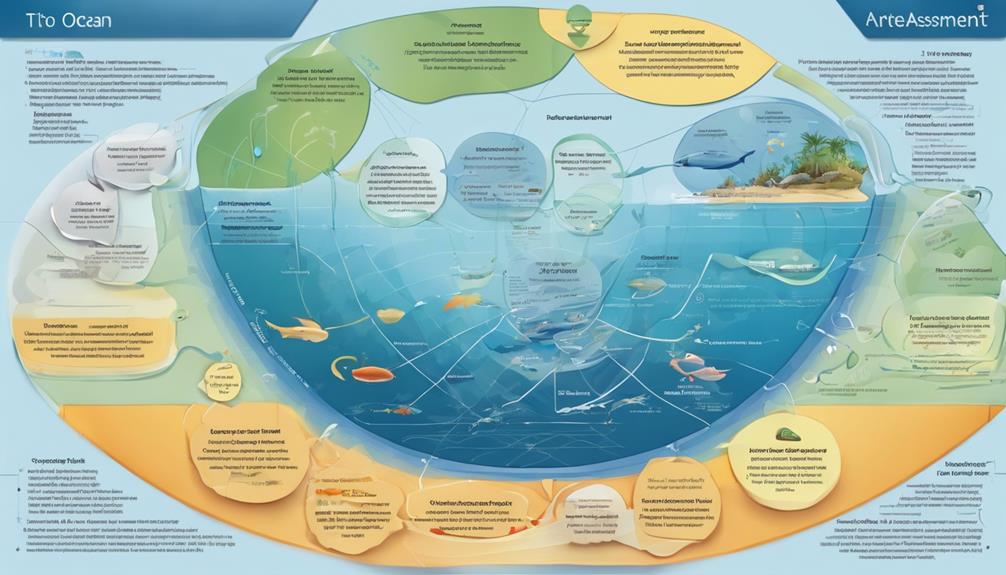
As we explore the extensive waters of our oceans, it is important to recognize that only a mere 7% of the world’s oceans are currently protected. With such a small percentage safeguarded, our comprehension and care for marine environments become essential.
The Ocean Assessment Framework offers a structured path towards sustainable ecosystem management, but what exactly makes this guide a pivotal tool in the realm of marine conservation?
Let's explore the intricate steps laid out within this framework and uncover how it can shape the future of our oceans.
Key Takeaways
- Assess biodiversity, habitat quality, and water conditions for marine ecosystem health
- Utilize data analysis tools to monitor ocean parameters and trends effectively
- Implement conservation measures like Marine Protected Areas and sustainable practices
- Promote respectful behavior towards oceans and support initiatives for marine ecosystem conservation
Importance of Ocean Assessment Framework
The Ocean Assessment Framework stands as an indispensable tool in our efforts to assess the health and sustainability of marine ecosystems. This structured approach allows us to comprehensively understand the impacts of human activities on oceans, paving the way for informed decision-making.
By providing a systematic method for monitoring marine resources, the framework enables us to implement conservation measures effectively. Through assessing oceans using this framework, we can pinpoint key areas requiring intervention and management, thus directing resources where they're most needed.
This process is vital in promoting sustainable practices and safeguarding marine biodiversity, ensuring the long-term health of our oceans. In essence, the Ocean Assessment Framework serves as a beacon guiding our conservation efforts, offering a pathway towards a future where marine ecosystems thrive in harmony with human activities.
Key Indicators for Marine Ecosystems
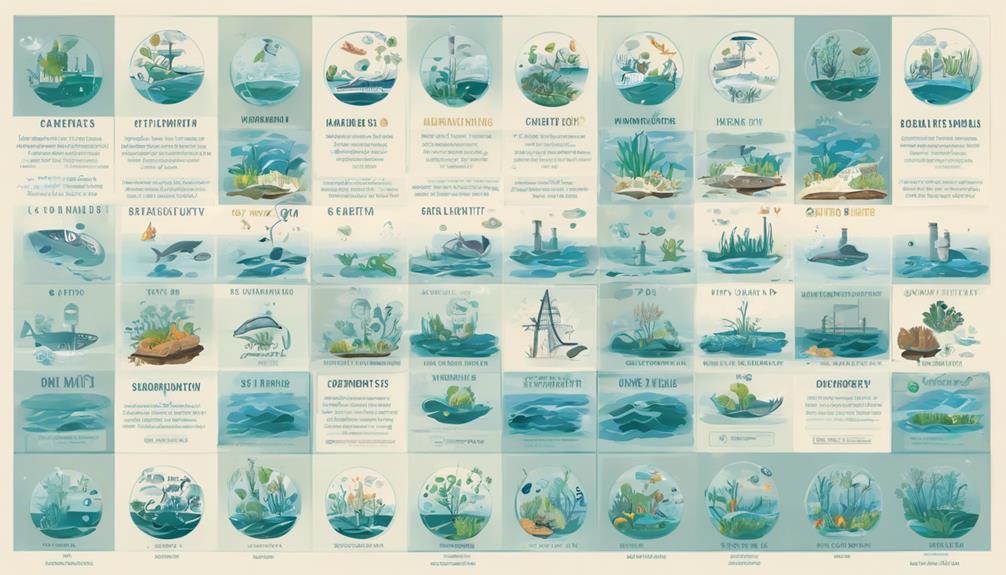
Assessing the health of marine ecosystems involves closely monitoring key indicators such as biodiversity levels, habitat quality, water quality, and population trends of key species. These indicators provide valuable insights into the overall well-being of marine environments. For instance, changes in coral reef health, seagrass coverage, and mangrove distribution are crucial factors that reflect the ecological balance within these ecosystems. Additionally, tracking nutrient levels, presence of pollutants, and ocean acidification levels are essential for understanding the impact of human activities on marine environments.
Population dynamics of fish stocks, migratory patterns of marine species, and changes in sea surface temperature serve as critical indicators for assessing the resilience of marine ecosystems to environmental stressors. Furthermore, monitoring the extent of marine protected areas, presence of invasive species, and trends in marine pollution play a vital role in evaluating the effectiveness of conservation efforts aimed at preserving marine biodiversity. By focusing on these key indicators, scientists and policymakers can make informed decisions to safeguard the health of our oceans for future generations.
Data Analysis for Ocean Assessment
Monitoring and analyzing data on various ocean parameters, such as temperature, salinity, pH, and biodiversity, is essential for comprehensive ocean assessment. Scientists employ advanced tools like satellites, buoys, and research vessels to gather data, which is then subjected to statistical methods and modeling techniques for interpretation.
This data analysis reveals crucial trends, patterns, and anomalies within the ocean ecosystem, providing valuable insights for effective management and conservation strategies. By integrating data analysis into ocean assessment, policymakers, researchers, and conservationists can make informed decisions to promote sustainable ocean management.
The use of sophisticated analytical approaches not only aids in understanding the current state of the oceans but also enables the prediction of future scenarios, facilitating proactive conservation measures. Through meticulous data analysis, we can delve deeper into the intricate workings of the marine environment and work towards preserving its delicate balance for future generations.
Implementing Conservation Measures
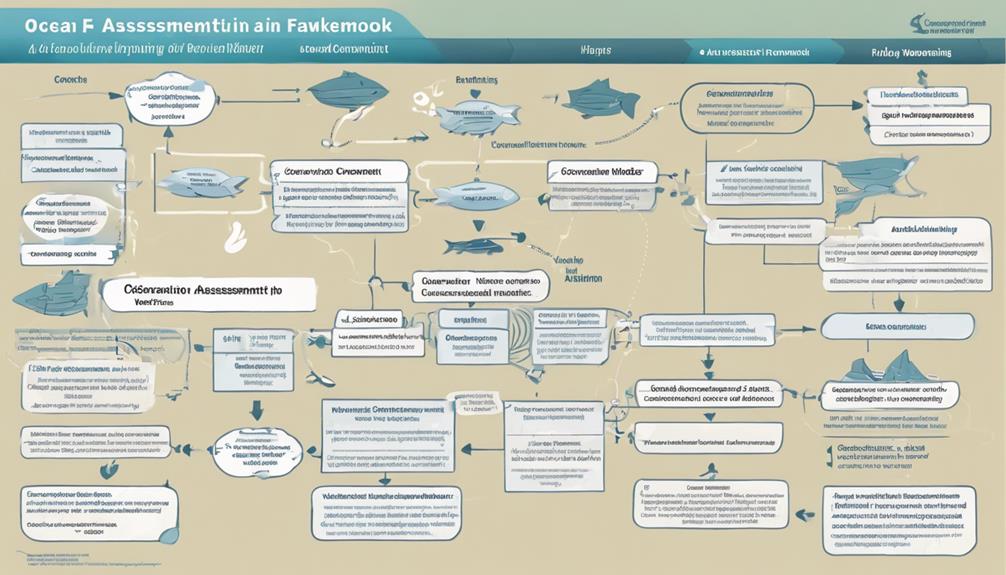
To enhance the preservation of marine ecosystems, a comprehensive approach integrating various conservation measures is essential. When implementing conservation measures, we must consider the interconnectedness of marine life and the delicate balance of the ocean environment. Here are key steps to effectively implement conservation measures:
- Establish Marine Protected Areas: Creating designated zones helps protect biodiversity and critical habitats from human activities such as overfishing and habitat destruction.
- Reduce Threats: Conservation measures focus on mitigating threats like overfishing and pollution that endanger marine species and disrupt the marine ecosystem's equilibrium.
- Promote Sustainable Practices: Encouraging sustainable fishing practices and reducing pollution ensures the long-term health and resilience of marine resources for future generations.
Making a Positive Impact on Oceans
Promoting sustainable practices in ocean conservation is key to making a positive impact on marine ecosystems. By implementing marine spatial planning, we can effectively manage human activities in oceans, reducing harmful impacts on marine life.
Following an ecosystem-based management approach is crucial for the conservation of marine ecosystems, ensuring a balanced and healthy ocean environment. Sustainable practices in utilizing marine resources are essential for the long-term health of our oceans, preventing overexploitation and depletion of vital species.
Integrating environmental concerns into planning processes is fundamental for sustainable ocean management, fostering a holistic approach that considers the interconnectedness of marine systems. Initiatives like Respectzone play a significant role in promoting respectful behavior towards the oceans, encouraging responsible actions that contribute to conservation efforts.
Frequently Asked Questions
What Is the Big 5 Framework Ocean?
We've got you covered!
The Big 5 framework, also known as OCEAN, delves into personality traits like Openness, Conscientiousness, Extroversion, Agreeableness, and Neuroticism. It offers valuable insights into behaviors, work preferences, and values of individuals.
Widely used in psychology and recruitment, the Big 5 model helps in making informed hiring decisions and fostering effective team dynamics. It's a powerful tool for understanding people and optimizing workplace interactions.
What Is the OCEAN 5 Factor Model?
Sure, the OCEAN 5 Factor Model categorizes personality traits into Openness, Conscientiousness, Extroversion, Agreeableness, and Neuroticism.
It's a tool for understanding behavior, values, and work preferences.
Widely used in psychology and recruitment, OCEAN aids in making informed hiring decisions and matching candidates to suitable roles.
Understanding this model enhances recruitment accuracy, contributing to building effective teams.
What Are the 5 Main Components of Personality Represented by the Ocean Model Discussed in Chapter 12?
We find the Ocean model in Chapter 12 detailing 5 key personality components:
- Openness, which measures receptiveness to new experiences and creativity.
- Conscientiousness, covering traits like organization and dependability.
- Extroversion, gauging energy levels around others.
- Agreeableness, assessing interpersonal harmony and pro-social behaviors.
- Neuroticism, which evaluates emotional stability.
These elements collectively provide a comprehensive view of an individual's personality traits.
What Are the Five Letters of Ocean Model?
The five letters of the OCEAN model are Openness, Conscientiousness, Extroversion, Agreeableness, and Neuroticism. These letters represent crucial personality traits that provide deep insights into individual behaviors and workplace dynamics.
Understanding each trait helps in comprehending how individuals interact, handle stress, and approach tasks. Employing the OCEAN model can greatly enhance team building efforts and improve strategies for managing employees effectively.
What Are the Key Steps in Using the Ocean Assessment Framework for Marine Research?
When conducting marine research, utilizing ocean assessment tools is crucial. The key steps in using the Ocean Assessment Framework for marine research involve collecting relevant data, analyzing the information, and interpreting the findings to gain insights into the health and quality of the marine environment.
Conclusion
In conclusion, the Ocean Assessment Framework offers a systematic approach to managing marine ecosystems, ensuring their sustainability and health. By utilizing key indicators and data analysis, we can implement conservation measures that make a positive impact on oceans.
How can we continue to protect and preserve our marine resources for future generations to enjoy?
Eugene brings a fresh, dynamic voice to our platform as one of our talented Writers. Specializing in research-driven content, he explores the latest findings in psychology and personal growth, translating them into actionable insights for our readers. Eugene’s work is fueled by a curiosity about what makes us tick and a desire to help others unlock their potential.
The Big Five (OCEAN)
Top 3 Ocean Assessment Tools for Marine Researchers
Wade into the depths of marine research with the top three ocean assessment tools that are revolutionizing how we explore and conserve our oceans.
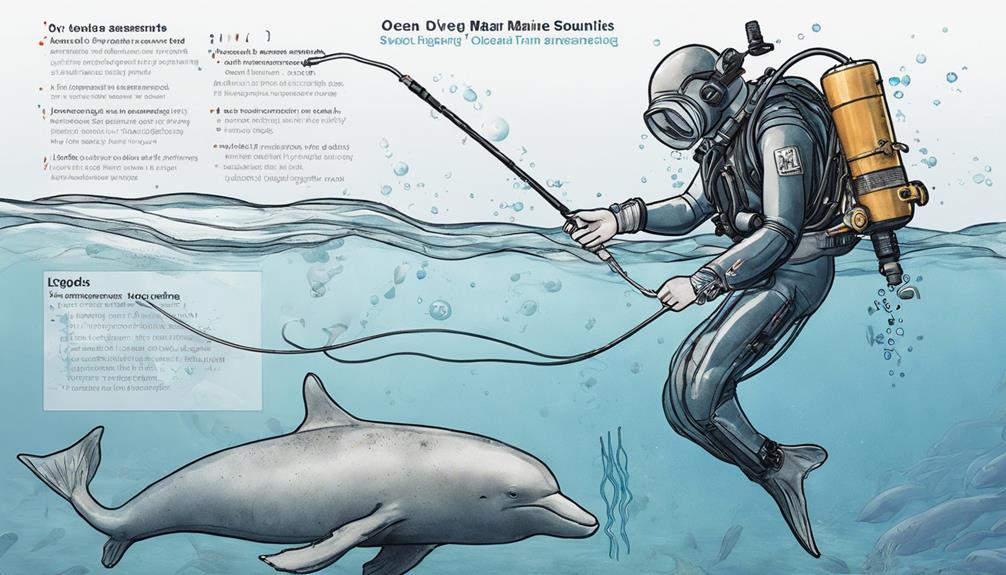
We have all faced the daunting challenge of choosing the best ocean assessment tools for our research projects. But have no fear, as we explore the wide array of options to identify the top three essential tools for marine researchers.
These tools are not only essential but also groundbreaking in their capabilities to unravel the mysteries of the ocean depths. So, which tools made the cut and why are they indispensable assets for those exploring the marine realm?
Stay tuned to discover the key players shaping the future of oceanic research and conservation.
Key Takeaways
- Underwater Drones (ROVs) aid in high-resolution ocean floor mapping and provide access to deep ocean environments.
- Acoustic technology efficiently covers large areas in surveys, helping in tracking fish populations and assessing biodiversity.
- Satellite imaging offers real-time data on ocean parameters, supporting global conservation efforts and monitoring climate change impacts.
- Data analysis tools provide insights into marine ecosystem health, aiding in sustainable management of ocean resources and guiding conservation efforts.
Underwater Drones for Ocean Mapping
Underwater drones, also known as Remotely Operated Vehicles (ROVs), play a crucial role in high-resolution ocean floor mapping for marine researchers. Equipped with cameras, sensors, and sampling devices, these drones allow us to explore the depths of the ocean where human divers can't reach.
The ability to operate at great depths provides us with access to a world teeming with diverse marine organisms and unique ecosystems. ROVs enable us to study the water column, collect samples, and analyze the distribution of species in their natural habitat.
Satellite Imaging for Ocean Monitoring

Satellite imaging plays a pivotal role in ocean monitoring by providing real-time data on essential parameters such as ocean surface temperature, chlorophyll concentration, and sea level height. These images help monitor ocean currents, detect phytoplankton blooms, and track changes in sea ice extent. The table below illustrates some of the key aspects of satellite imaging for ocean monitoring:
| Parameters | Information Provided | Application |
|---|---|---|
| Ocean Surface Temperature | Helps track variations in temperature, aiding in the prediction of weather events. | Monitoring climate change impacts. |
| Chlorophyll Concentration | Indicates levels of phytoplankton, crucial for understanding marine ecosystems. | Detecting phytoplankton blooms. |
| Sea Level Height | Assists in studying sea level rise and ocean circulation patterns. | Monitoring coastal erosion and storm surges. |
Satellite data aids in understanding ocean circulation patterns, identifying marine pollution, and predicting weather events. Researchers utilize satellite imaging to study coral reef health, monitor coastal erosion, and assess the impact of climate change on oceans. The continuous monitoring capabilities of satellite imaging support global efforts in ocean conservation and management.
Acoustic Technology for Marine Surveys
Utilizing acoustic technology, marine researchers employ sound waves to map the seafloor and detect marine organisms in comprehensive surveys. Acoustic surveys play a vital role in studying marine habitats, tracking fish populations, and assessing biodiversity in underwater environments.
Here are four key aspects of how acoustic technology enhances marine surveys:
- Efficient Coverage: Acoustic surveys can efficiently cover large areas, providing researchers with extensive data on marine ecosystems and their overall health.
- Species Identification: By analyzing acoustic data, scientists can identify species distributions, migratory patterns, and even detect underwater structures essential for marine life.
- Conservation Guidance: Acoustic technology is crucial for understanding marine environments, guiding conservation efforts, and promoting sustainable management of ocean resources.
- Ecosystem Health: Acoustic surveys help researchers monitor the health of marine ecosystems, offering valuable insights for preserving these vital habitats.
Frequently Asked Questions
What Are 3 Tools Oceanographers Use?
We use Conductivity-Temperature-Depth (CTD) profilers to measure properties like salinity, temperature, and depth.
Environmental sensors on collecting nets help us gather data on marine organisms.
Satellite data provides crucial real-time information for monitoring.
CTD rosettes collect water samples at various depths.
Remotely Operated Vehicles (ROVs) are essential for exploring ocean depths.
These tools help us study marine environments more effectively and understand ocean processes better.
What Are the 3 Technologies for Studying the Ocean Floor?
When studying the ocean floor, researchers rely on multibeam bathymetric systems for detailed seafloor mapping. Sonar and seismic profiling technologies provide geological insights, while acoustic systems are used for biomass estimation.
These tools collectively offer a comprehensive understanding of oceanic structures, processes, and marine life. By combining these technologies, marine researchers gain valuable data to further our knowledge of the underwater world.
What Are Some Tools Marine Scientists Use to Study the Ocean?
We utilize various tools to study the ocean, including CTD profilers for measuring physical data, multibeam bathymetric systems to map seafloor topography, and acoustic systems for estimating biomass.
Water sampling devices like the CTD/rosette system help gather data for chemical analysis.
Remotely Operated Vehicles (ROVs) allow us to explore ocean depths and conduct research in challenging environments.
These tools provide valuable insights into marine ecosystems and ocean properties.
Which Tool Would a Scientist Use to Study Ocean Currents?
We'd use Acoustic Doppler Current Profilers (ADCPs) to study ocean currents. These instruments measure water velocities at different depths non-intrusively using Doppler technology. ADCPs can be mounted on moorings, boats, or autonomous underwater vehicles for continuous monitoring.
The data they provide is crucial for understanding ocean circulation dynamics and their impact on climate systems. By creating models and forecasts based on ADCP data, we can advance various marine research studies effectively.
How are the Ocean Assessment Tools for Marine Researchers Different from the Global Marine Assessment?
Ocean assessment tools for marine researchers focus on local and specific data collection, analysis, and monitoring of marine environments. In contrast, the global marine assessment provides insights into the overall health and condition of the world ocean, considering a broader perspective on the state of marine ecosystems and resources.
Conclusion
In conclusion, the top 3 ocean assessment tools for marine researchers provide invaluable insights into the health and dynamics of our oceans.
Underwater drones, satellite imaging, and acoustic technology offer precise data for mapping, monitoring, and surveying marine environments.
Their combined capabilities create a comprehensive understanding of ocean ecosystems, aiding in conservation efforts.
The use of these advanced tools enhances our ability to protect and preserve our precious marine resources.
Eugene brings a fresh, dynamic voice to our platform as one of our talented Writers. Specializing in research-driven content, he explores the latest findings in psychology and personal growth, translating them into actionable insights for our readers. Eugene’s work is fueled by a curiosity about what makes us tick and a desire to help others unlock their potential.
-

 Self-Understanding3 months ago
Self-Understanding3 months agoUnderstanding DMCA Protections & Compliance
-

 Relationship Dynamics3 months ago
Relationship Dynamics3 months agoCan a Man Truly Love His Side Chick
-

 Enneagram of Personality1 week ago
Enneagram of Personality1 week agoEnneagram Test: Printable Version for Easy Self-Discovery
-

 Personality Exploration3 weeks ago
Personality Exploration3 weeks agoDiscover Your Traits with Atomic Habits Personality Test
-

 Personality Exploration3 months ago
Personality Exploration3 months agoDOPE Personality Test Explained: Traits & Types
-

 Personality Exploration2 weeks ago
Personality Exploration2 weeks agoAlpha Beta Omega Personality Test Explained
-

 Personality Exploration3 months ago
Personality Exploration3 months agoAlpha Beta Omega Sigma Female Personality Quiz
-

 Self-Understanding2 months ago
Self-Understanding2 months agoDiscover Your Traits with Our Personality Test
